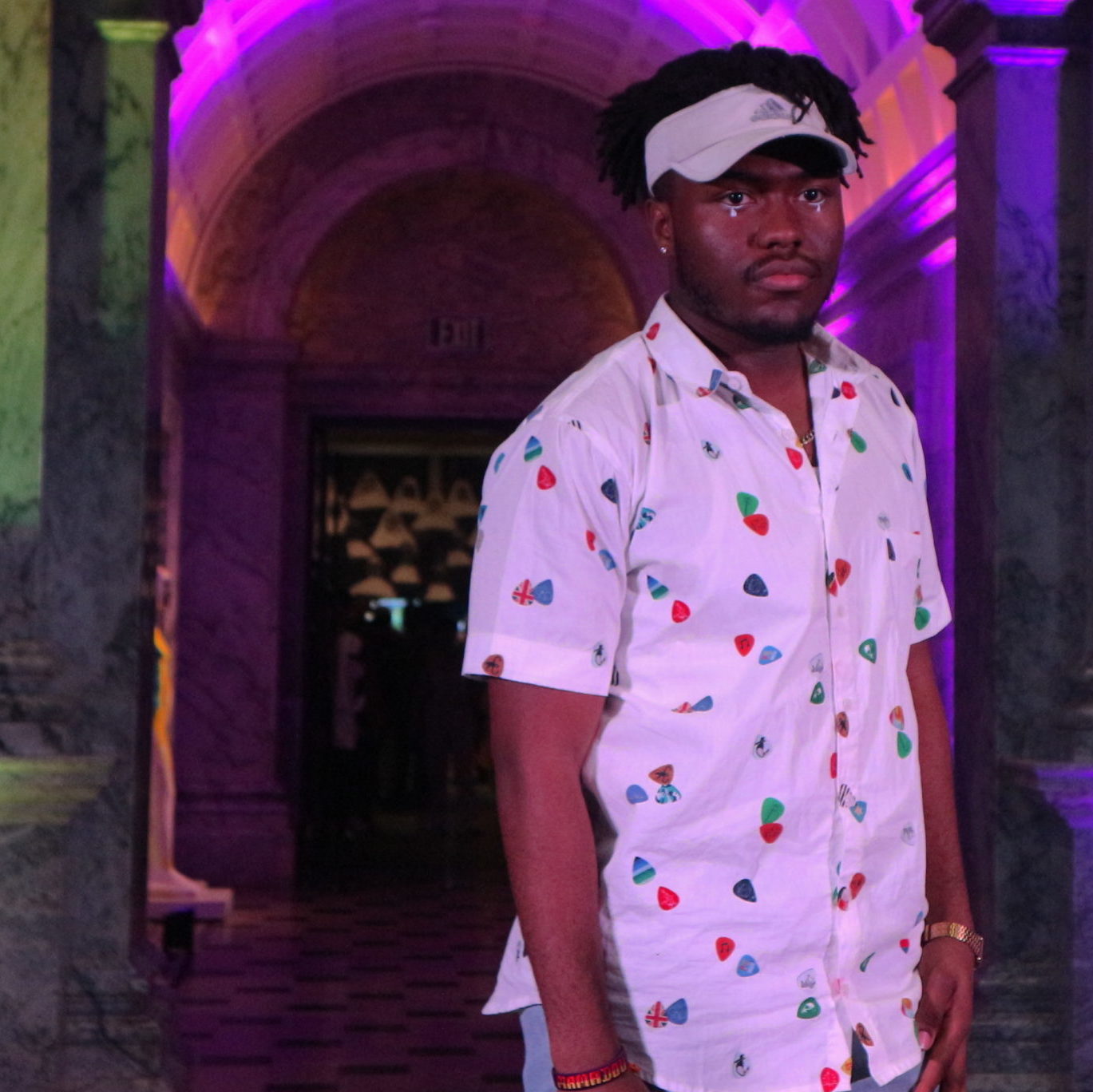On Jan. 23, poets, singers and models stood, danced and strutted in the marbled lobby of Stanford’s Cantor Arts Center. It was the first-annual FLI+LGBTQ+ Student Self-Fashioning Show, an event created to “highlight the creativity [and] the ingenuity of people’s own self-expression,” in the words of Mekhi Jones ’20, one of three student organizers.
The event was sponsored by Timberland; Estee Lauder; MAC Cosmetics; the School of Engineering; the Program in Writing and Rhetoric (PWR); Stanford Arts; Feminist, Gender, and Sexuality Studies; Stanford Introductory Students and the Cantor Arts Center.
PWR lecturer Ruth Starkman was the first to float the idea of the student-led fashion show. In late fall 2019, she reached out to two of her students: Jones and Michael Spencer ’21, who quickly took on leadership positions. From there, the two seniors recruited a third and final student: Doris Rodriguez ’21. Together, the three of them decided on a creative direction; engaged student models, performers, makeup artists, stylists and designers and planned the event.
Fashion has long been seen through what Rodriguez describes as a “Eurocentric and elitist lens.” Runway fashion is a multimillion-dollar industry with a long, exclusionary history. Modern fashion, since its conception, has been dominated by luxury brands, concentrated in mostly global cities, and held to rigid body and beauty standards. In organizing the FLI+LGBTQ+ Student Self-Fashioning Show, Jones, Rodriguez and Spencer hoped to bring marginalized communities together and broaden the scope of fashion shows, creating entry points for people who may have previously felt barred from runway modeling.
The event began at 6 p.m., shortly after sunset. In the Cantor’s main lobby, where the event was held, was a black runway with two parts: a long tail that pointed towards the elevator corridor and a raised, square platform that rested in the dead center of the lobby. Spectators gathered around the perimeter of the room. Some guests stood along the walls, others sat on the steps of the staircase on the right side of the room and peered between the bronze balusters and golden handrails. The models and performers waited in the Stanford Family Room/Sarah Love Miedel Gallery, and when it was their turn, they walked through the elevator corridor — beneath its rounded arch — into the main lobby, where they could finally be seen by all.
Suspended above the runway was a partially expanded black banner with the words “I AM AN AMERICAN” written on it in white block letters. The banner is not fully expanded in order to obscure the word “AMERICAN” and provoke questions in its viewers. This banner, one of the Cantor’s ongoing exhibitions by Stephanie Syjuco, seemed to underscore the intentions of the night, which were to create conversations about identity through art and foster a sense of belongingness amongst students and faculty.
In the background, behind the runway, spectators on the ground-level could see hints of another one of the Cantor’s exhibitions: BLKNWS by Kahlil Joseph, a work of art relating to the media’s depiction of black America.
“We want the Cantor to be a welcoming and inviting space for all people in the Stanford community,” said Peter Tokofsy, director of academic and public programs at Cantor.
By encouraging diversity and inclusion in its art and its programming, the Cantor has made concrete steps towards accomplishing that goal.
At the start of the event, the master of ceremonies professor Adam Banks, academic director of the Program in Writing and Rhetoric and Institute for Diversity in the Arts Harmony House, gave a brief introduction, during which he welcomed the audience and praised the event as one “not for consumption or commercialism,” but for celebrating fashion as art and students as creatives. Then, poet Josh Nkoy ’21, rapper Melinda “Linda Sol” Hernandez ’21 and singer-rapper Gabriel “VII” Townsell ’20 took the stage to share their original works. Showcasing a variety of arts in a space of primarily visuals is intended to counter experiences of passive viewing and turn the Cantor into what Tokofsy describes as “a space for creativity.” After the live performances, a soundtrack of modern hip-hop began to play. Finally, a stream of models flowed into the lobby, one after the other.
This year’s show included 56 models, some of whom were wearing items made by student designers, the rest of whom were self-styled. There were three student designers: Ph.D. candidate Ana Tárano, Cairo Mo ’20 and Rodriguez, one of the organizers. Tárano showcased three pieces from her mini-collection “Tumbao,” named after an Afro-Cuban style of music; Mo, a multimedia artist, showcased pieces made from recycled materials and Rodriguez showcased items from their gender-neutral clothing line JustBudzZz, which they hope will create dialogue about gender and expression in fashion.
Next came the self-styled models, which featured a wide array of looks. Some students with heritage from East and North Africa wore traditional dress; there was a monochromatic skirt suit, multiple ornate blazers, a white dress with an artsy print à la the Mondrian dress and more. “Every day you kind of engage with fashion … When you get dressed … You’re, like, presenting yourself to the world and being like, ‘Who am I and who do I want to be?’” Jones said. The runway portion of the event was an opportunity for students to explore those questions.
The energy in the room, throughout the night, was electric.
“[We’re] not at the opera!” said DJ Sheck Mulbah while encouraging the audience to clap and cheer louder.
“The outward love for fellow students was really powerful to me,” Tokofsy said.
After the show had officially ended, people stuck around to mingle and dance.
“The students put on a wonderful, fun, meaningful event,” Starkman said. “I loved seeing [them] define for themselves what ‘style’ is and what a ‘fashion model’ looks like. I can’t wait to see more new faces and styles next year.”
Contact Chasity Hale at chashale ‘at’ stanford.edu.
